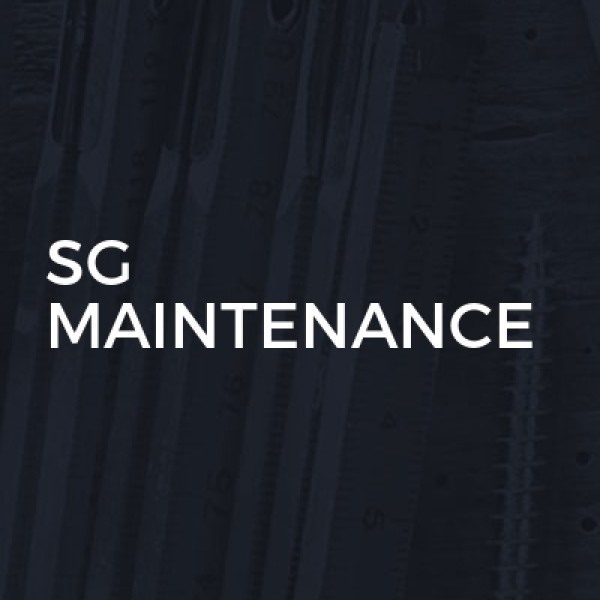Property Refurbishment in Crawley
Buckland Building Contractors Ltd is a premier building service provider based in the heart of Burgh Heathread more »
Parkplace Developments Ltd: Expert Builders and Renovators in Woodmansterne, Surrey
Welcome to Parkplace Developme... read more »
D.G. Carpentry is your go-to solution for all things carpentry and construction in the picturesque area of Norwood Hill,... read more »
Welcome to SG Maintenance, your go-to experts for Builders, Extension Builders, Property Maintenance, Property Refurbishment, and Kitchen... read more »
Welcome to TC Construction, your premier choice for Builders, Driveway Contractors, Garage Conversions, Renovations, Home Office Conversi... read more »
Welcome to Filip Elias, your premier choice for expert carpentry, flooring, kitchen fitting, loft conversions, and property refurbishment... read more »
Kbailey Building Services, nestled in the heart of Old Coulsdon, is your premier choice for top-notch building services... read more »
Welcome to Natcon UK Ltd, your premier choice for top... read more »
Welcome to Down Side Builders, your trusted partner f... read more »
Welcome to RTC Building and Renovations Limited, your... read more »
Litconbuild Ltd: Premier Builders in Earlswoo... read more »
Shaun & Son Roofing & Guttering is a... read more »
DHC Bespoke Services, nestled in the... read more »
Welcome to R D Beer and Son Ltd, your trusted partner... read more »
Welcome to Tessa Dean Bespoke Refurbishments & Interi... read more »
Welcome to PKC Brickwork Ltd, your trusted partner fo... read more »
Welcome to Art & Decor Ltd, your trusted partner for... read more »
Welcome to Robert Fulton Carpentry And General Buildi... read more »
Welcome to Terry Wilkinson, your trusted partner for... read more »
Welcome to Saunders Developments Ltd, your go-to expe... read more »
Search Property Refurbishment in places nearby
Understanding Property Refurbishment in Crawley
Property refurbishment in Crawley is an exciting venture that can transform a tired space into a vibrant and functional environment. Whether you're looking to enhance the value of your home or simply want to enjoy a more comfortable living space, understanding the ins and outs of property refurbishment is essential. This guide will walk you through the various aspects of refurbishment, ensuring you have all the knowledge needed to embark on your renovation journey.
The Importance of Property Refurbishment
Refurbishing a property is more than just a facelift; it's about improving the overall quality and functionality of a space. In Crawley, where the property market is competitive, a well-refurbished home can significantly increase its market value. Moreover, it can enhance your living experience by creating a space that meets your personal needs and preferences.
Enhancing Property Value
One of the primary reasons homeowners in Crawley opt for refurbishment is to boost their property's market value. A well-executed refurbishment can make a property more appealing to potential buyers, leading to a higher selling price. This is particularly important in a bustling town like Crawley, where property demand is high.
Improving Living Conditions
Beyond financial gains, refurbishment can dramatically improve your quality of life. By updating outdated features, enhancing energy efficiency, and optimising space, you can create a more comfortable and enjoyable living environment for you and your family.
Planning Your Refurbishment Project
Before diving into a refurbishment project, careful planning is crucial. This involves setting clear goals, establishing a budget, and understanding the scope of work required. Proper planning ensures that your project runs smoothly and stays within budget.
Setting Clear Goals
Determine what you want to achieve with your refurbishment. Are you looking to modernise your kitchen, add an extra bedroom, or perhaps create an open-plan living area? Having clear goals will guide your decisions throughout the project.
Establishing a Budget
Refurbishment projects can vary greatly in cost, depending on the scale and complexity. It's essential to establish a realistic budget that covers all aspects of the project, including materials, labour, and any unforeseen expenses.
Understanding the Scope of Work
Clearly define the scope of work for your refurbishment. This includes identifying which areas of the property will be renovated, the specific changes to be made, and the timeline for completion. A well-defined scope helps prevent scope creep and keeps the project on track.
Choosing the Right Professionals
Hiring the right professionals is crucial to the success of your refurbishment project. In Crawley, there are numerous skilled contractors and designers who can bring your vision to life. However, choosing the right team requires careful consideration.
Researching Contractors
Start by researching local contractors with a solid reputation for quality work. Look for reviews and testimonials from previous clients to gauge their reliability and expertise. It's also beneficial to view their past projects to ensure their style aligns with your vision.
Conducting Interviews
Once you've shortlisted potential contractors, conduct interviews to assess their suitability for your project. Ask about their experience, qualifications, and approach to refurbishment. This is also an opportunity to discuss your goals and expectations.
Checking Credentials
Ensure that the contractors you consider are licensed and insured. This protects you from liability in case of accidents or damage during the refurbishment process. Additionally, verify their membership in professional organisations, which can indicate a commitment to industry standards.
Designing Your Refurbished Space
The design phase is where your vision starts to take shape. Collaborating with a skilled designer can help you create a space that is both functional and aesthetically pleasing. Consider the following elements when designing your refurbished property.
Maximising Space
In Crawley, where space can be limited, maximising every square foot is essential. Consider open-plan layouts, multifunctional furniture, and clever storage solutions to make the most of your space.
Incorporating Modern Features
Modern features such as energy-efficient lighting, smart home technology, and sustainable materials can enhance the functionality and appeal of your refurbished property. These features not only improve your living experience but also add value to your home.
Choosing the Right Aesthetics
The aesthetics of your refurbished space should reflect your personal style while complementing the overall design of your home. Consider colour schemes, textures, and finishes that create a cohesive and inviting atmosphere.
Executing the Refurbishment
With a solid plan and design in place, it's time to execute the refurbishment. This phase involves coordinating various trades, managing timelines, and ensuring quality workmanship. Effective project management is key to a successful refurbishment.
Coordinating Trades
Refurbishment projects often require multiple trades, including electricians, plumbers, and carpenters. Coordinating these trades to work efficiently and harmoniously is crucial to keeping the project on schedule.
Managing Timelines
Establish a realistic timeline for your refurbishment project and monitor progress regularly. Delays can be costly, so it's important to address any issues promptly to keep the project on track.
Ensuring Quality Workmanship
Quality workmanship is essential to the success of your refurbishment. Regularly inspect the work being done to ensure it meets your standards and address any concerns with your contractor immediately.
Overcoming Common Challenges
Refurbishment projects can present various challenges, from unexpected structural issues to budget overruns. Being prepared to tackle these challenges is essential to keeping your project on track.
Dealing with Unexpected Issues
During refurbishment, you may encounter unforeseen issues such as hidden structural damage or outdated wiring. Having a contingency budget and a flexible approach can help you address these challenges without derailing the project.
Staying Within Budget
Budget overruns are a common concern in refurbishment projects. To avoid this, regularly review your budget and expenses, and make adjustments as needed. Prioritising essential work over optional extras can also help keep costs in check.
Maintaining Communication
Effective communication with your contractor and team is vital to overcoming challenges. Regular updates and open dialogue ensure everyone is on the same page and can address any issues promptly.
Finalising Your Refurbishment
As your refurbishment project nears completion, there are several steps to take to ensure a smooth transition to your newly renovated space. This includes final inspections, addressing any remaining issues, and preparing for occupancy.
Conducting Final Inspections
Before signing off on the project, conduct a thorough inspection to ensure all work has been completed to your satisfaction. Address any outstanding issues with your contractor before making the final payment.
Addressing Snagging Issues
Snagging refers to minor defects or unfinished work that may be present after the main refurbishment is complete. Create a snagging list and work with your contractor to resolve these issues promptly.
Preparing for Occupancy
Once all work is complete, it's time to prepare your refurbished property for occupancy. This may involve cleaning, furnishing, and decorating the space to create a welcoming and comfortable environment.
Frequently Asked Questions
- What is the average cost of property refurbishment in Crawley? The cost can vary widely depending on the scope of the project, but on average, it ranges from £10,000 to £50,000.
- How long does a typical refurbishment project take? Most projects take between 4 to 12 weeks, depending on the complexity and size of the refurbishment.
- Do I need planning permission for refurbishment? Generally, internal refurbishments do not require planning permission, but it's best to check with the local council for specific regulations.
- Can I live in my home during refurbishment? It depends on the extent of the work. For major refurbishments, it may be more practical to find temporary accommodation.
- How can I ensure my refurbishment is eco-friendly? Use sustainable materials, energy-efficient appliances, and consider renewable energy sources to reduce your environmental impact.
- What should I look for in a refurbishment contractor? Look for experience, positive reviews, proper licensing, and a portfolio of past projects that align with your vision.
Embarking on a property refurbishment in Crawley can be a rewarding experience, transforming your home into a space that meets your needs and enhances your lifestyle. With careful planning, the right professionals, and a clear vision, you can achieve a successful refurbishment that adds value and comfort to your property.
Send a message












